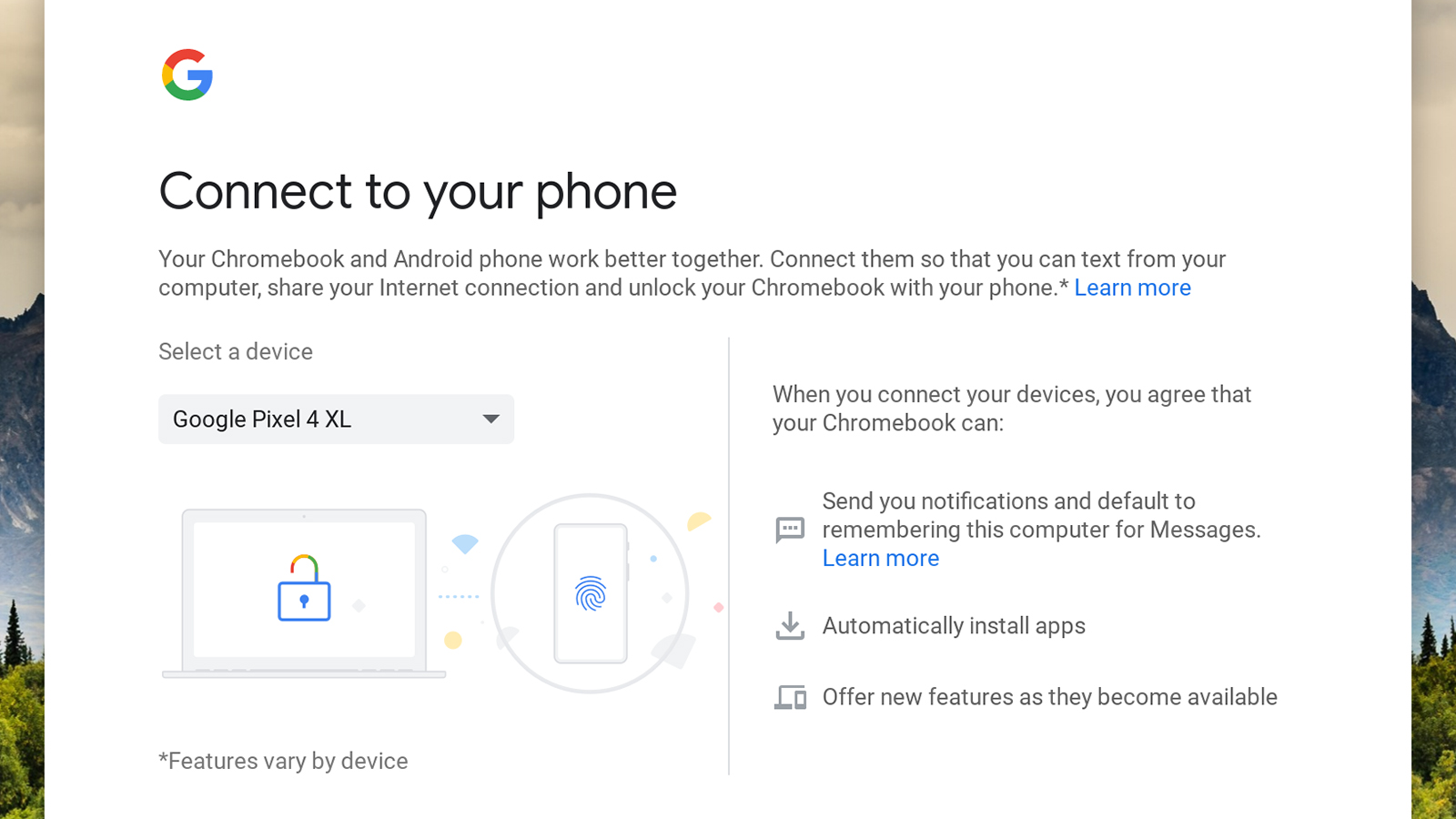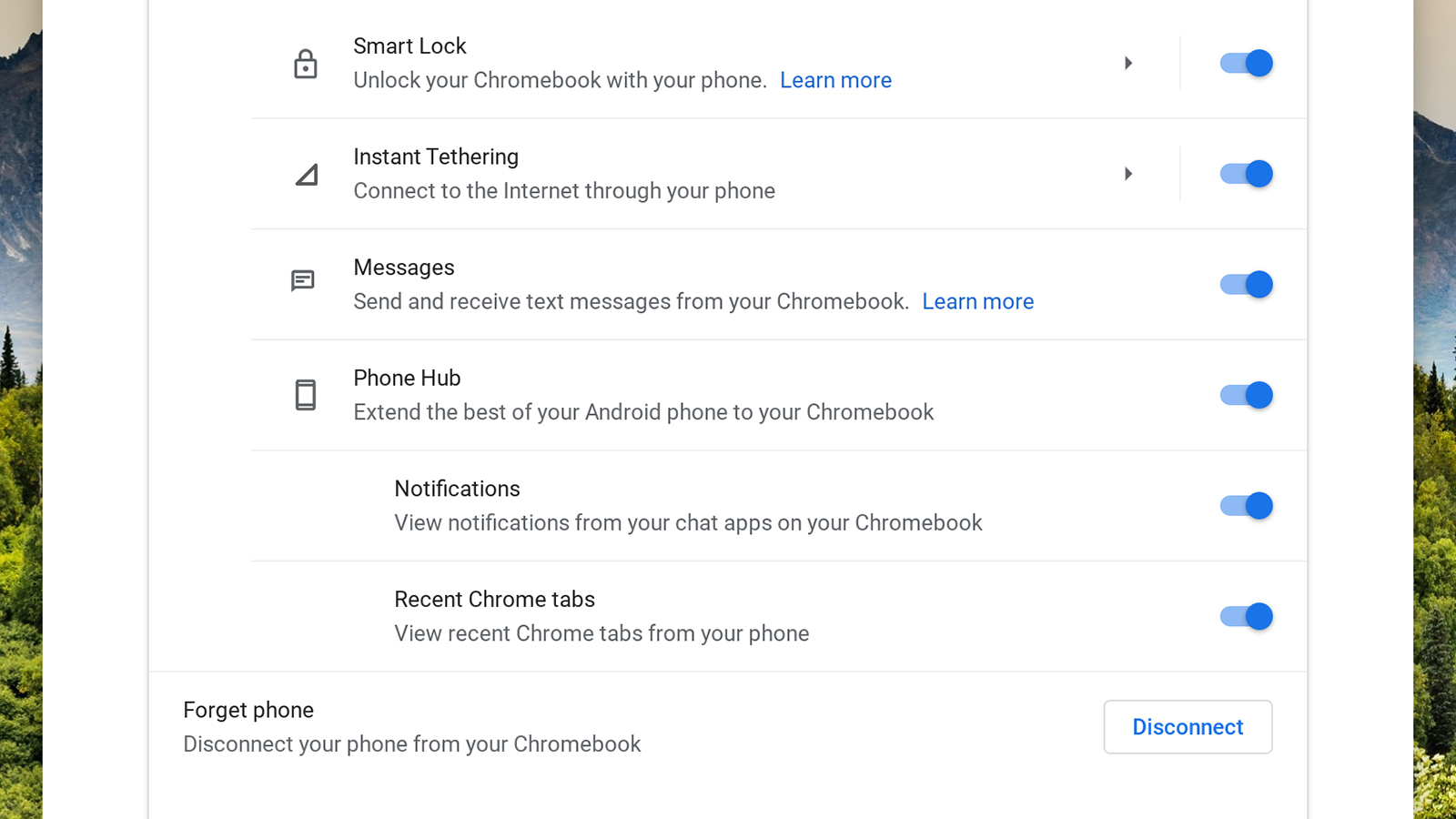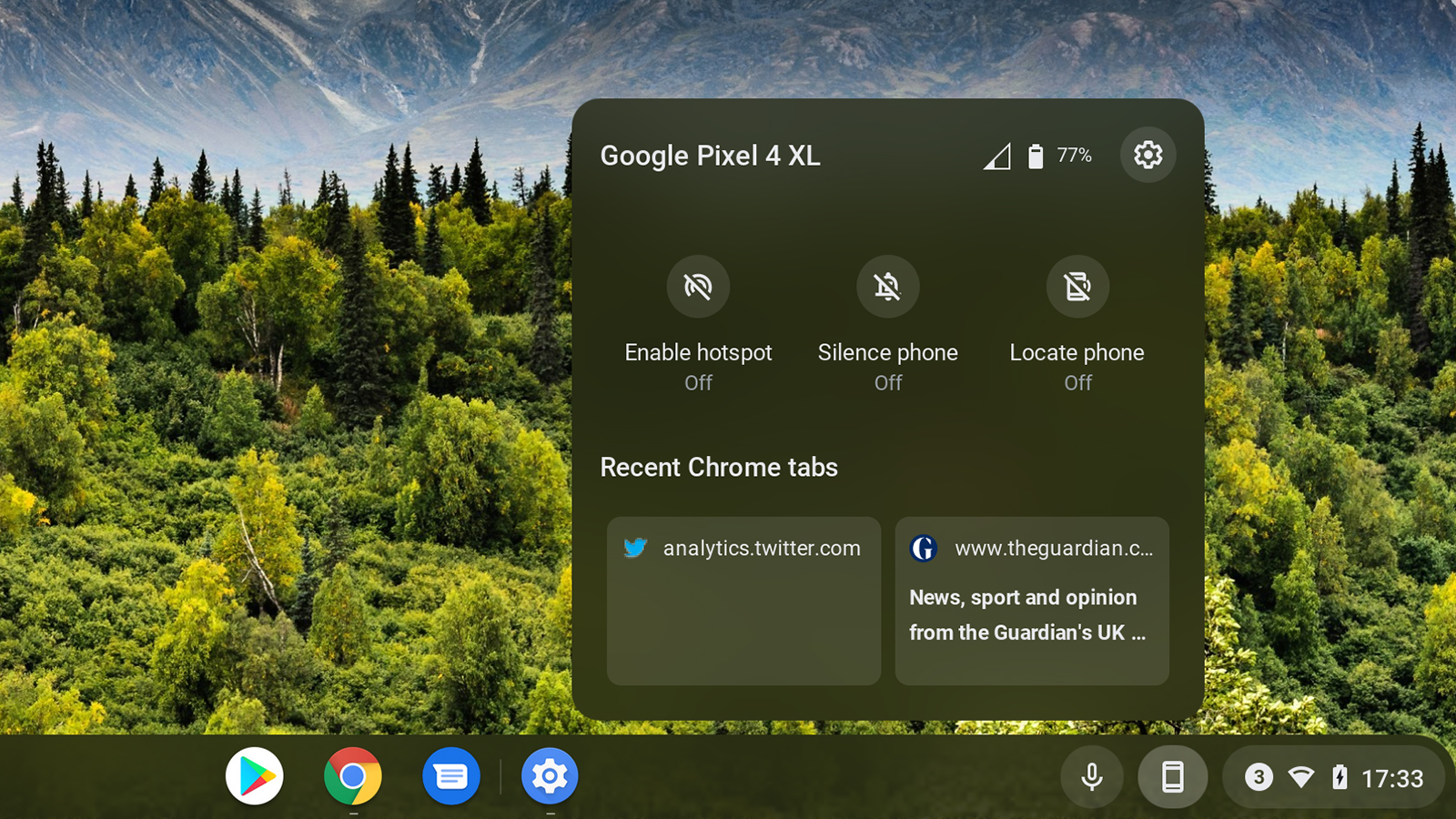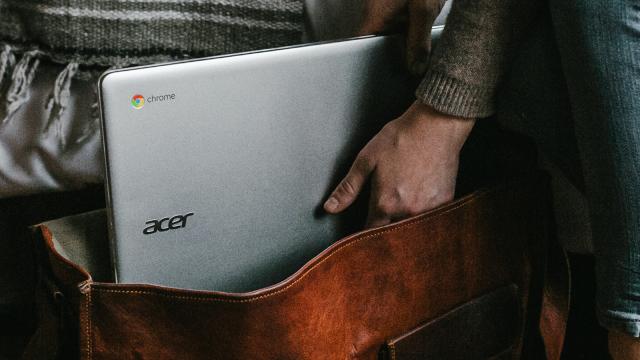Google is making it easier than ever to move seamlessly between an Android phone and a Chromebook. New and existing features in Chrome OS mean that you can get pair your Android device to your Chromebook in seconds, which means you can sync notifications, Chrome tabs, and more between the two.
To connect your Android phone to your Chromebook, click the time down in the lower right hand corner of the Chrome OS interface, then click the cog icon to bring up the Chrome OS Settings dialog. Under Connected devices, click the Setup button next to Android phone.
On the next screen that appears, choose your phone from the drop-down list of devices associated with your Google account. Click Accept & continue, at which point you’ll need to enter your Google account password. Chrome OS and Android take care of everything in the background.
Back in the Connected devices section of Settings, you should now be able to select your handset and toggle the various features on or off. To check that the connection has been established, you can also go to Connected devices, Connection preferences, and Chromebook in Settings on the Android device.

After you connect the two devices, you can enable a whole host of features. For instance, Smart Lock unlocks your Chromebook using your phone. If the phone is detected nearby and unlocked, Chrome OS automatically skips the account login screen, so you don’t need to enter your password to get in.
Then there’s Instant Tethering. Once enabled, your Chromebook will give you the option of getting online using your phone as a hotspot (data plan allowing) if it can’t detect a standard wifi connection. Everything is handled for you, including activating your phone’s hotspot feature — all you need to do is click Connect in Chrome OS.
Next in the list is Messages. Click Setup to turn this on, and your Chromebook will open the Google Messages for web interface and ask you to sign in using a QR code. In Messages on your phone, you’ll need to tap the three dots in the top right-hand corner on the main interface, then Messages for web to scan the QR code.
Brand new to this screen in Chrome OS 89 is Phone Hub, which adds even more integration between your Chromebook and your Android phone. At the time of writing, it doesn’t look as though the feature has rolled out to everyone, even if you’ve got Chrome OS 89 installed — it seems Google is taking its time when it comes to expanding the number of people who can access it.

If you don’t have it yet, you might be able to turn it on via a Chrome flag: Open a new Chrome tab and go to “chrome://flags#enable-phone-hub” to locate and enable the feature. After a restart, you might have access to the Phone Hub.
Once it’s enabled, you get the Phone Hub toggle switch in Chrome OS Settings plus toggle switches for Notifications (which shows your phone notifications on your Chromebook) and Recent Chrome tabs (which lets you access Chrome tabs you’ve recently opened on Android through Chrome OS).
You’ll also see a phone icon down on the right-hand side of the taskbar shelf. Click this to get access to the hub (and to enable it in the first place). You will also need to enable access to notifications for Google Play Services on your phone, but you’ll be guided through the process (via Apps and notifications, Advanced, Special app access, and Notification access in Android Settings).
Notification alerts appear just like standard Chrome OS alerts, only they’ll have your phone’s name up at the top as well. Notifications will continue to come through on your phone as well as on your Chromebook, so you’re not going to miss anything.

If you bring up the Phone Hub from the Chrome OS shelf, you can see (and open) browser tabs that have recently been accessed in Chrome for Android. There are also toggle switches for turning on your phone’s hotspot feature, muting your phone, and locating your phone (which will cause it to start ringing, even if it’s silenced).
At the top of the dialog, you can see the signal strength and battery life currently being reported by your Android device, while a click on the cog icon will take you to the same device connection settings that we looked at earlier.
There’s no doubt that this increasing list of features make life more convenient if you’re using an Android device alongside a Chromebook. It’s similar to the integration you get with iPhones and Macs, which makes it easier to spend less time switching between devices and getting distracted.
